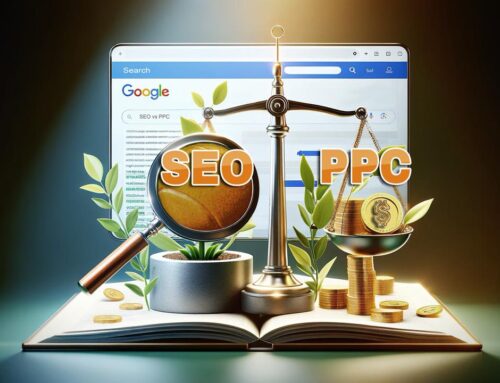To stand out and succeed, they need to be agile, proactive, and efficient, often with fewer resources at their disposal. This is where marketing automation comes into play. Automating marketing tasks can be a game-changer, enabling small enterprises to enhance their efficiency, personalize customer experiences, and free up time for strategic thinking. In this article, you will delve deep into the realm of marketing automation tailored for small businesses. Learn about its advantages, the best tools in the industry, strategies for implementation, and a lot more. By the end, you will have the knowledge and insight needed to elevate your business through intelligent automation.
Small Business Marketing Automation: A Comprehensive Guide
Table of Contents
- Understanding Marketing Automation
- Benefits for Small Businesses
- Top Marketing Automation Tools
- Strategies for Effective Implementation
- Potential Pitfalls and How to Avoid Them
- Frequently Asked Questions
- Final Thoughts
- Sources
Understanding Marketing Automation
It’s more than just software; it’s a holistic approach that seeks to streamline, automate, and measure marketing tasks and workflows. This enhances operational efficiency and grows revenue faster, often bridging the gap between sales and marketing efforts.
Origins of Marketing Automation
The concept of marketing automation began with the advent of Customer Relationship Management (CRM) tools in the late 1980s and early 1990s. These tools managed and analyzed customer interactions and data throughout the customer lifecycle. With the rise of digital technology and the internet, marketing automation software evolved to fit the modern digital landscape, helping businesses automate repetitive online tasks.
Core Components of Marketing Automation
- Email Marketing: The ability to send out targeted and personalized emails to a list of subscribers or potential customers automatically.
- Landing Pages: Creation of targeted web pages where visitors land from emails or advertisements. They often contain specific offers or capture lead information.
- Campaign Management: Organize and automate a series of specified actions, tasks, or communications based on customer behaviors or predetermined time intervals.
- Lead Scoring: Assign scores to leads based on their actions or engagements, enabling the sales team to prioritize.
- Integration with CRMs: Seamless flow of data between marketing and sales databases, ensuring up-to-date customer information.
- Analytics and Reporting: Monitor campaign performance, user behaviors, and more to refine marketing strategies.
Why It’s More Relevant Now
The modern customer’s journey has become increasingly complex, scattered across multiple touchpoints online and offline. With the proliferation of channels and devices, consumers expect a consistent and personalized experience. Manually curating this experience for every individual is not feasible, making automation crucial.
Moreover, with the data explosion, businesses have more information on customer behavior than ever before. Marketing automation platforms help in harnessing this data, drawing actionable insights from it, and ensuring that marketing efforts are not based on gut feeling but on empirical evidence.
A Paradigm Shift
Marketing automation has shifted the paradigm from mass marketing to a more targeted and personalized approach. Instead of broadcasting a single message to an entire audience, businesses can now tailor messages to individuals based on their preferences and behaviors. It recognizes that no two customers are the same and that each requires a unique approach to move them down the sales funnel.
Understanding marketing automation is crucial for businesses aiming to scale and evolve in the modern digital era. While the tools and technologies are continually advancing, the core principle remains: to foster a deeper, more personal relationship with consumers efficiently and effectively.
Benefits for Small Businesses
This is where marketing automation can be a game-changer. Let’s delve deeper into the myriad of benefits it offers to small businesses.
1. Cost Efficiency
For small businesses operating on limited budgets, marketing automation provides an opportunity to maximize ROI. By automating repetitive tasks and streamlining marketing processes, businesses can achieve more with less, reducing labor costs and ensuring that human capital is focused on strategic, high-value tasks.
2. Enhanced Customer Experience
Marketing automation facilitates personalized communication. By segmenting the audience based on behavior, interests, or demographics, small businesses can send tailored messages that resonate more with the recipient, enhancing user engagement and loyalty.
3. Scalability
As the business grows, so does the customer base and the complexity of marketing operations. Automation platforms can easily scale with the business, accommodating growing marketing needs without proportionally increasing costs or manpower.
4. Data-driven Decision Making
The analytics and reporting tools within marketing automation software provide invaluable insights into customer behavior and campaign performance. This empowers small businesses to make informed decisions, refining strategies based on actual data rather than guesswork.
5. Improved Lead Management
Automated lead scoring and nurturing processes ensure that potential customers receive the right content at the right time. It not only increases the chances of conversion but also ensures that the sales team can focus on leads that are truly sales-ready, optimizing the sales process.
6. Multi-channel Consistency
Consumers today interact with brands across various channels – email, social media, websites, etc. Marketing automation ensures a consistent message and brand presence across all these channels, providing a unified customer experience.
7. Time Savings
Time is a precious resource for small businesses. Automation frees up time by taking care of routine tasks. This allows entrepreneurs and their teams to focus on core business activities, innovation, and other strategic initiatives.
8. Enhanced Retention
By analyzing customer behavior and engagement, automation tools can identify potential churn risks. Businesses can then launch targeted retention campaigns, sending special offers or content to re-engage those customers, ensuring a higher lifetime value.
9. Testing and Optimization
A/B testing functionalities in automation tools enable businesses to test different campaign elements, from email subject lines to landing page designs. This continuous testing allows for regular optimization, ensuring that marketing efforts are always at their most effective.
Top Marketing Automation Tools
From streamlining email marketing campaigns to analyzing user behavior, these tools offer a suite of features to bolster marketing efficiency and effectiveness. Let’s explore some of the top contenders in the market.
1. HubSpot
- Overview: HubSpot is an all-in-one inbound marketing software that offers tools for email marketing, social media marketing, content management, and analytics.
- Features: Landing pages, SEO tools, lead scoring, CRM integration, and a detailed analytics dashboard.
- Best for: Small to medium-sized businesses looking for an integrated marketing, sales, and service platform.
2. Mailchimp
- Overview: Predominantly known for its email marketing capabilities, Mailchimp has expanded its offerings over the years to provide a comprehensive marketing platform.
- Features: Automated email campaigns, landing pages, audience segmentation, and detailed performance reports.
- Best for: Small businesses and startups focused on boosting their email marketing efforts.
3. ActiveCampaign
- Overview: ActiveCampaign combines email marketing, marketing automation, and a CRM in a unified platform.
- Features: Site tracking, event tracking, automation goal setting, and advanced reporting capabilities.
- Best for: Businesses looking for an advanced email marketing platform with robust automation capabilities.
4. Marketo (by Adobe)
- Overview: Marketo is a powerful, enterprise-grade marketing automation software that’s part of the Adobe Marketing Cloud.
- Features: Lead management, email marketing, consumer marketing, customer base marketing, and mobile marketing.
- Best for: Medium to large-sized enterprises requiring sophisticated marketing solutions.
5. Pardot (by Salesforce)
- Overview: Pardot is a marketing automation solution tailored for B2B companies. It’s a part of Salesforce’s suite of business tools.
- Features: Advanced email analytics, CRM integration, lead nurturing, and ROI reporting.
- Best for: B2B companies looking for advanced marketing automation solutions integrated with Salesforce.
6. SendinBlue
- Overview: SendinBlue offers cloud-based digital marketing tools, including email marketing and SMS campaigns.
- Features: Transactional emails, SMS campaigns, chat functionality, and a CRM.
- Best for: Small to medium-sized businesses looking for both email and SMS marketing solutions.
7. Autopilot
- Overview: Autopilot is a visual marketing automation tool that focuses on ease-of-use with a drag-and-drop interface.
- Features: Multi-channel marketing, personalized messaging, and performance insights.
- Best for: Companies looking for a straightforward and intuitive automation solution without a steep learning curve.
8. Keap (formerly Infusionsoft)
- Overview: Keap is designed for small businesses, offering CRM, email marketing, and sales automation in one.
- Features: Contact and lead management, sales automation, email marketing, and messaging.
- Best for: Small businesses wanting a combined CRM and marketing automation solution.
Strategies for Effective Implementation
The true potential of these tools is harnessed when they’re implemented effectively and strategically. Here’s a guide to ensure that your marketing automation journey is not only smooth but also yields optimal results.
1. Clear Objectives and Goals
- Description: Start with a clear understanding of what you want to achieve with marketing automation. Is it lead generation, customer retention, sales conversions, or all of the above?
- Action Steps:
- List down specific, measurable goals (e.g., “Increase leads by 30% in the next quarter”).
- Revisit and adjust these objectives periodically based on performance data.
2. Segment Your Audience
- Description: Not all customers are the same. Segmenting your audience allows for targeted and personalized campaigns.
- Action Steps:
- Segment based on demographics, purchase behavior, browsing history, etc.
- Regularly update these segments as more data becomes available.
3. Craft High-Quality Content
- Description: The content pushed through automation tools must resonate with the audience. Quality trumps quantity every time.
- Action Steps:
- Invest in content research.
- Ensure content is relevant, timely, and offers value to the recipient.
4. Blend Automation with Human Touch
- Description: Automation is efficient, but it shouldn’t replace the human aspect of your brand.
- Action Steps:
- Use automation for repetitive tasks but ensure personal interactions where necessary (e.g., customer complaints or specific inquiries).
5. A/B Testing
- Description: Continuously optimize your campaigns by testing different elements to see what resonates most with your audience.
- Action Steps:
- Test different email subject lines, content formats, sending times, etc.
- Analyze results and implement winning strategies.
6. Train Your Team
- Description: Your automation tool is only as good as the people using it. Proper training ensures that your team can harness its full potential.
- Action Steps:
- Organize regular training sessions.
- Stay updated with new features and updates from the tool provider.
7. Monitor and Adjust
- Description: Marketing is dynamic. Constantly monitor the performance of your campaigns and adjust strategies accordingly.
- Action Steps:
- Regularly review analytics and performance metrics.
- Make data-driven decisions.
8. Ensure Data Privacy
- Description: With automation comes the responsibility of handling user data. Ensure compliance with data protection regulations.
- Action Steps:
- Stay updated with data protection laws (e.g., GDPR, CCPA).
- Implement security measures to protect user data.
9. Integration with Other Tools
- Description: For holistic marketing, your automation tool should seamlessly integrate with other tools in your arsenal, such as CRMs, analytics platforms, etc.
- Action Steps:
- Choose tools that offer easy integrations.
- Regularly check and ensure data synchronization across platforms.
10. Customer Feedback Loop
- Description: Customer feedback is invaluable. It offers insights into what’s working and areas of improvement.
- Action Steps:
- Implement feedback collection methods (e.g., surveys).
- Incorporate feedback into your marketing strategies.
Potential Pitfalls and How to Avoid Them
When not executed thoughtfully, automation can lead to inefficiencies, wasted resources, and even damage to a brand’s reputation. Let’s explore some common pitfalls and the best strategies to sidestep them.
1. Over-Automation
- Pitfall Description: Relying too heavily on automation can lead to a lack of personal touch, making communications feel impersonal and robotic.
- Avoidance Strategy: Balance automation with manual efforts. For example, use automation for initial outreach but switch to personalized communications as leads move down the funnel.
2. Ignoring Customer Segmentation
- Pitfall Description: Sending the same messages to your entire email list can lead to lower engagement rates.
- Avoidance Strategy: Always segment your audience based on behavior, demographics, or other criteria and tailor your messaging to each group.
3. Failing to Update Content
- Pitfall Description: Using outdated or irrelevant content in automated campaigns can deter and alienate customers.
- Avoidance Strategy: Regularly review and update your content repository. Schedule periodic checks to ensure content relevance and accuracy.
4. Not Utilizing Data Effectively
- Pitfall Description: Ignoring the analytics and insights provided by automation tools can lead to missed optimization opportunities.
- Avoidance Strategy: Set up a routine to review metrics, understand customer behavior, and refine strategies based on insights.
5. Neglecting Mobile Users
- Pitfall Description: With the proliferation of mobile devices, not optimizing for mobile can lead to lost engagement opportunities.
- Avoidance Strategy: Ensure that your automated campaigns, especially emails and landing pages, are mobile-responsive.
6. Inadequate Training
- Pitfall Description: Without proper training, teams might not utilize the full potential of the automation tool or might use it incorrectly.
- Avoidance Strategy: Invest in comprehensive training sessions when onboarding a new tool and offer refresher courses periodically.
7. Spamming Recipients
- Pitfall Description: Overloading customers with too many automated messages can lead to increased unsubscribe rates and diminished brand perception.
- Avoidance Strategy: Monitor the frequency of communications, and give subscribers options to choose their preferred communication frequency.
8. Poor Data Management
- Pitfall Description: Inaccurate or outdated data can derail automation efforts, leading to miscommunication or missed opportunities.
- Avoidance Strategy: Regularly cleanse and update your databases. Remove inactive subscribers and ensure data accuracy.
9. Failing to Test
- Pitfall Description: Without testing, you may not identify potential issues or areas of improvement in your automated campaigns.
- Avoidance Strategy: Implement A/B testing for various campaign elements and continuously optimize based on results.
10. Overlooking Customer Feedback
- Pitfall Description: Ignoring customer feedback can lead to a disconnect between what the business thinks is working and what the customer truly wants.
- Avoidance Strategy: Create avenues for customers to provide feedback and incorporate their insights into your strategies.
Frequently Asked Questions
Final Thoughts
The most important takeaway from this article is the transformative potential of marketing automation for small businesses. When implemented effectively, it can level the playing field, allowing small entities to compete with much larger competitors. The blend of efficiency, personalization, and analytical insight can propel small businesses to new heights. However, it’s crucial to remember the balance – while automation offers many benefits, maintaining a genuine human touch ensures meaningful and lasting connections with your audience.











Leave A Comment